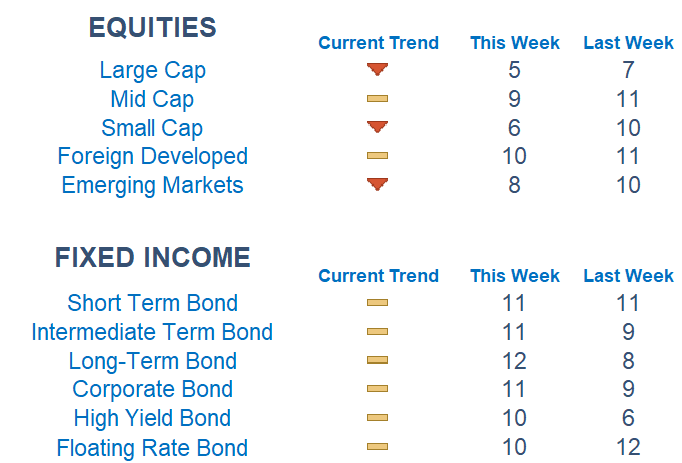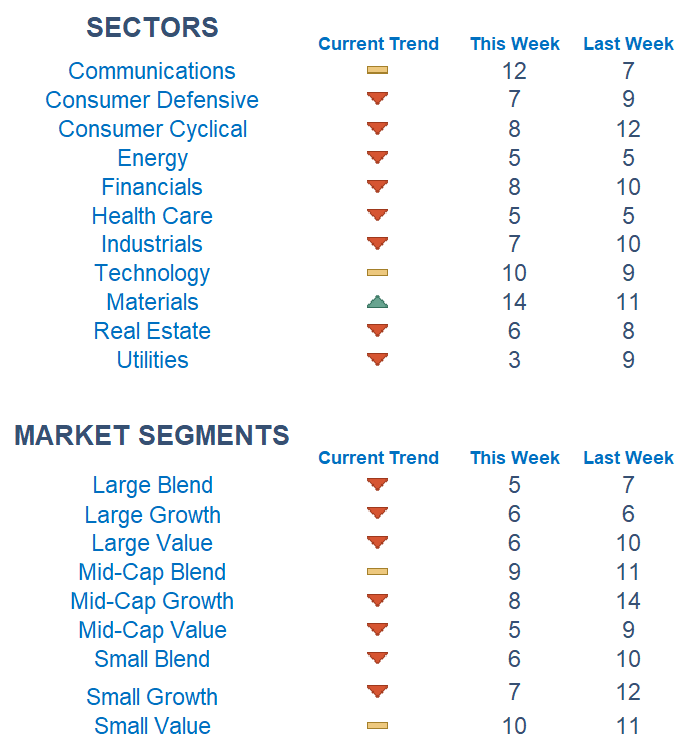Although it was only four days of trading, we saw the worst week for markets since December as data mounted that the Fed would likely remain restrictive for longer.

This Week on Wall Street - Week of February 27th
Market Commentary
Although it was only four days of trading, we saw the worst week for markets since December as data mounted that the Fed would likely remain restrictive for longer. Heading into this week, we are still seeing weaker newtons across the board for asset classes.
After a short-term breakout, markets are back in the range we were stuck in for nearly the last two months. Investors will continue to weigh the still higher inflation readings against strong economic data out of the labor market. This week we will get more data on the overall economy when the ISM surveys are released.
Among sectors, we are seeing strength in Materials while Utilities, Energy, and Health Care are grading out the weakest. Picking names with relative strength within sectors has remained the dominant and most effective strategy.

What is Newton?
r Newton model attempts to determine the highest probability of future price direction by using advanced algorithmic and high-order mathematical techniques on the current market environment to identify trends in underlying security prices. The Newton model scores securities over multiple time periods on a scale of 0-20 with 0 being the worst and 20 being the best possible score. Trend & level both matter.

Economic Releases This Week
Monday: Durable Goods Orders, Pending Home Sales
Tuesday: S&P Cash Shiller Home Price Index, Chicago Business Barometer, Consumer Confidence
Wednesday: Minneapolis Fed President Kashkari Speaks, ISM Manufacturing
Thursday: Initial & Continuing Jobless Claims
Friday: ISM Services, Dallas Fed President Logan Speaks

Technical trading models are mathematically driven based upon historical data and trends of domestic and foreign market trading activity, including various industry and sector trading statistics within such markets. Technical trading models, through mathematical algorithms, attempt to identify when markets are likely to increase or decrease and identify appropriate entry and exit points. The primary risk of technical trading models is that historical trends and past performance cannot predict future trends and there is no assurance that the mathematical algorithms employed are designed properly, updated with new data, and can accurately predict future market, industry and sector performance.
